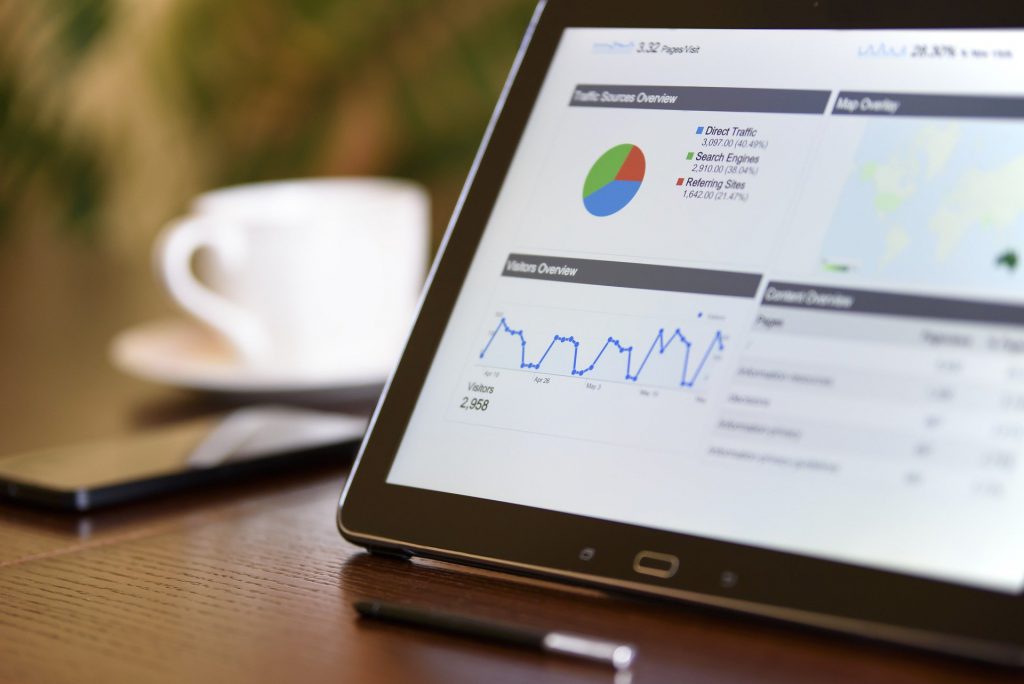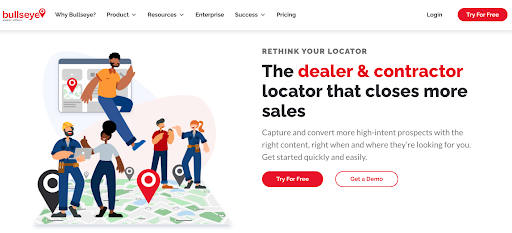To compete and win, building materials manufacturers need to use every marketing tactic available to their advantage. This includes tried-and-true marketing and sales assets, like brochures.
Whether in print or digital form, a brochure can be an effective way of reaching your audiences with targeted, to-the-point messaging about your products and special offers. It’s your chance to show, succinctly and persuasively, why your brand beats the competition.
However, don’t let it be another piece of paper customers throw away, or a PDF they delete from their hard drives. Your brochure should be a powerful reminder of how your building materials meet the needs of homeowners, local pros, and others who buy your products.
Here are our tips for creating the most effective marketing brochure possible: one that measurably earns your building materials brand more business:
1. Determine Your Brochure’s Purpose and Audience
For your brochure to have an impact, it must have a well-defined purpose.
This is the first thing to get right. A Content Marketing (CMI) survey of B2B marketers found that only 43% of respondents had a documented content marketing strategy.

By simply having a defined purpose and strategy behind your marketing, especially for smaller and tightly-focused content pieces like brochures, your messaging as a building product manufacturer can truly stand out.
Decide what you want your next brochure to achieve. Is it:
- Overall brand awareness? If so, you might want to highlight your main brand message while emphasizing your products’ reliability, longevity, security, and sustainability, depending on what’s most important to your audience.
- Comparing and contrasting your products with those of competitors? If so, you’ll want to draw the clearest-possible distinction between your products and others, with strong visuals and emphasis on the unique benefits your customers will get.
- More details on a new product line or service? If so, your brochure should provide precise product details and specs to enable customers to make an informed decision and buy exactly what they need.
Understanding your audience is key to clarifying your brochure’s purpose. As an enterprise building materials manufacturer, you likely have several “buckets” of potential customers, such as homeowners, contractors, and dealers.
By thinking ahead about which audience you’re speaking to — and relying on your own knowledge of their beliefs, desires, and pain points — you’ll hit on all the right points in your brochure and give it a much better chance of driving sales.
2. Plan the Format, Visuals, and Messaging
Next, you’ll want to figure out what goes inside the brochure, and what the overall piece will look like.
Format and Layout
Consider the overall format and layout of the brochure. Will it be digital-only, or will it primarily be a printed piece of collateral?
It can be smart to include print brochures in your strategy. The Data and Marketing Association UK (DMA) claims that 56% of consumers find printed materials to be more trustworthy than other marketing channels. Print brochures are traditionally single tri-fold sheets, but they can also be an unfolded single page or multiple pages.
However, there are limits and costs when it comes to distributing printed marketing materials. Even if you’re planning to use the brochure as a print medium, it simply makes sense to have a shareable digital version at all times.
Visuals
Brochures are a visually-driven medium, and the images you use will be important companions to the text. Make sure you choose images that grab attention, demonstrate product features, and solidify your main selling points in your prospects’ minds.
Messaging
Finally, what you convey through the written word is what will actually close the deal and drive action.
The written copy on the front cover should be short and to-the-point, describing what’s inside the brochure. On the inside, you’ll want to provide the details that matter most, and give your customer every reason they need to buy with confidence. On the back cover or at the end, provide your company’s contact information.
3. Have a Distinct Call-to-Action
Your call-to-action (CTA) is a powerful moment in any marketing message. It’s where you tell your audience exactly what to do next.
It’s well known that online, over 90% of web visitors who read your headline will read your CTA copy. The same logic can be applied to a building material brand’s brochures.
If a homeowner is attracted to the promise on your brochure’s front cover and continues reading out of interest in your products, they’ll likely get to the end. That’s where you should lead them unambiguously to the next step.
For a brochure, a CTA can be as simple as Call Us or Visit Our Website, or it could be a more goal-oriented directive like Request Samples or Call Us for a Quote.
In a digital brochure, any of these could be a clickable button or hyperlinked text. If it’s a physical print brochure, you might want to provide a QR code for your site. Most prospects will have a mobile device, and this will enable them to conveniently get more info from your business on the spot.
4. Indicate How to Buy Your Products
High-intent building materials customers want to know one thing from your website: where to buy your products.
That’s why you need to have a great dealer or contractor locator page.
According to Epsilon, 8 out of 10 consumers are more likely to buy from a brand that offers a personalized experience. You can provide just that with a modern, responsive locator that detects where your customers are and directs them to the nearest, most convenient retailer or installer.
The best solution for creating a great locator page? Bullseye, the #1 locator software for building product manufacturers.
Bullseye makes it easy for your customers to find the nearest dealer or contractor, submit an inquiry, and purchase your products in person as quickly as possible. Also, when a customer asks for more info, both your company and your dealers are able to follow up and nurture the relationship.
This is good news! Not only will this leave your brochure’s readers no doubt about how to buy your products…you’ll turn the brochure into an essential lead generation tool that brings prospects directly into your online sales funnel.
How might you do this? At the end of a print brochure, your CTA might include a QR code linking to your Bullseye-built locator page, which will be convenient for prospects who have a mobile device on hand and are ready to buy. With a digital brochure, you can add a clickable link to your locator.
Either way, you’ll be bringing more eager prospective customers to the cash register.
5. Decide on Distribution Methods
Now that you have a sales-boosting brochure designed and written — and hopefully a lead-generating locator page to send readers to — it’s time to get that content into the hands of potential customers.
Brochures are such a versatile medium that you can use any number of distribution methods:
Printed Brochures
Direct mail is a good distribution option, both for reaching new local markets and encouraging past buyers to make a new purchase.
You can also deliver your printed brochures in bulk to dealers, who in turn will use them as sales collateral when talking to independent contractors and end consumers. This is a good way to help channel partners, such as local retailers and installers, drive sales of your products, and extend your brand reach.
Digital Brochures
A more efficient way to empower local dealers to sell on your brand’s behalf is to allow them to access and download digital versions of your brochures online, in a secure, trackable way.
The best-in-class solution for this is the marketing asset management (MAM) platform RevBase.

RevBase is a modern solution for distributing marketing materials like brochures, whether they’re in print or digital form, to local channel partners or your internal sales reps. It allows you to track downloads and print requests, as well as see which dealers and contractors are making the most use of key assets.
From there, you can easily determine which dealers and contractors are bringing in the most sales for your brand. You can also distribute brochures to your internal sales and customer service representatives for use in 1-to-1 follow-up with qualified leads.
In short, there are many ways to distribute your brochures. Using modern digital tools like RevBase, however, will give your building materials brand the edge.
6. Track Your Brochure’s Effectiveness
Your brochure’s real-world sales performance matters. A lot.

It’s the only thing that determines whether your efforts are worthwhile. Here are some good methods for evaluating the viability of your brochures in terms of sales potential, along with a few things to keep in mind:
Track Sales Results and Usage
For print brochures, you can track the number of physical pieces you’ve delivered to dealers and distributors, and closely follow sales over the next month or quarter to see if the brochure has made an impact.
For digital brochures, it’s even easier to follow up on this using a platform like RevBase, which lets you track the exact number of downloads from certain users. From there, you can link downloads directly to your channel partners’ utilization of your brochures and resulting sales numbers.
Track Email Opens From Customers
Another way to analyze your brochures’ effectiveness is to track the number of downloads from your customers.
A 2021 study by AWeber found that 72% of businesses surveyed make use of email marketing, and a whopping 94.6% realized its importance to their overall outreach strategy. This is especially the case when furnishing your leads with helpful information via PDF brochures.
You can track clicks in emails and link those numbers to conversions with email marketing software. If you’re gaining leads via your Bullseye-built locator page, you’re in luck: Bullseye integrates with top email marketing platforms and CRMs that track this kind of data.
As an alternative, you can use RevBase to distribute digital brochures in a trackable way via your website.
Test and Refine Messaging Based on the Data
Finally, you should keep updating your marketing brochures based on the data that’s coming in.
Think With Google reports that nearly 70% of top marketers say their companies use data to inform decisions at all levels. Leveraging the data is how you’ll build on the revenue-producing potential of your brochures over time.
Once you’ve linked sales numbers to each brochure, you can see clearly which ones work and which ones don’t.
By testing different ways of communicating with your audiences, you’ll eventually land on messaging that’s proven to drive sales. This will make your brochure strategy a lot more efficient.
Brochures Are Powerful Collateral for Business Material Manufacturers, If Done Right
They may be thought of as old-fashioned relics of marketing, but brochures can play an important role in your sales ecosystem.
Especially with good planning, distribution, and result-tracking, your brochures can convince more homeowners and contractors to look your way, while enabling more local dealers to sell more of your brand’s products.
However, the right technology for distribution makes all the difference. By organizing and distributing digital brochures with RevBase, you’ll make it easy for channel partners, internal sales reps, web visitors, and others to download those powerful marketing pieces.
Also, by capturing leads with a Bullseye-built locator, you’ll be able to send brochures out to those whom it’ll influence the most: prospects who submit inquiries to dealers and installers via your website.
All in all, brochures create lead gen and sales opportunities you won’t want to miss out on — and using the right tech tools can help you succeed.
Ready to see how Bullseye and RevBase can help? Schedule your demo today!




